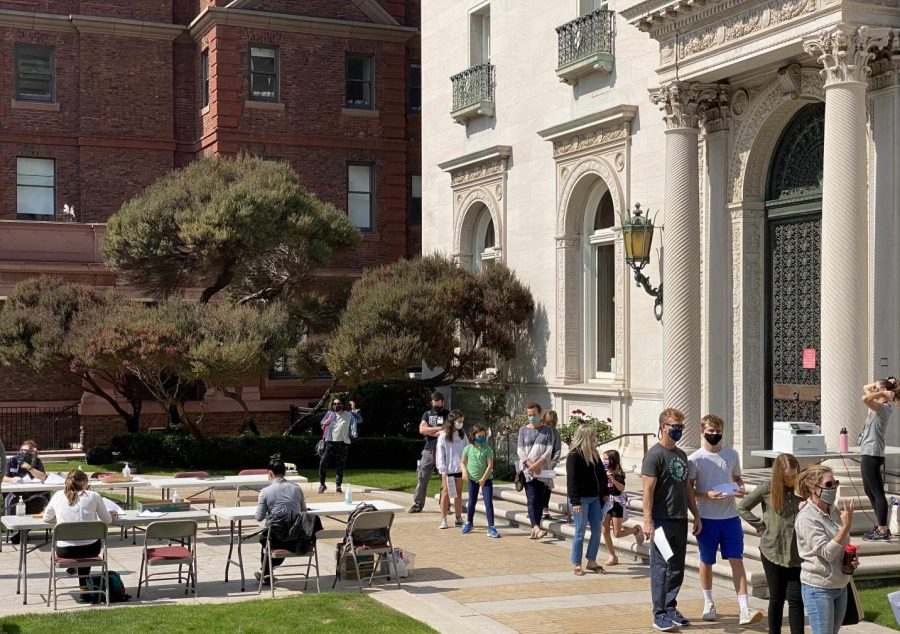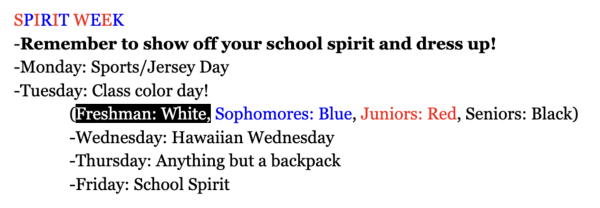School return will require new protocols and adjustments
K-2 return prompts questions about when the high school will shift to in-person learning
Tracy Anne Sena | with permission
Families line up in front of the Flood Mansion for COVID-19 nasal testing on Sept. 22, 2020. Students, faculty and staff working on campus are required to undergo testing every two weeks.
October 1, 2020
The news that K-2 has returned to in-person learning, has high school students eager to know when they can also return to campus.
“During online school, we are not able to communicate face to face with our peers and teachers,” sophomore Natalie Posner said. “It is harder to have class discussions because people have wifi problems and computer glitches.”
In order for high school students to return to campus, the school must meet all requirements set by the San Francisco Department of Public Health.
“The DPH just opened the application for high school returns,” Head of School Rachel Simpson wrote in an email. “We are preparing our application to submit ASAP.”
Even though there are no set dates for the return of older students, the initial start to in-person class has high schoolers hopeful about also getting back to campus.
“The return of school is definitely something I am excited for,” sophomore Sage Swartz said. “We will definitely need to be very cautious, but I am excited to study and work in person as well as see my friends.”
DPH has outlined protocols that schools need to follow for schools to reopen in person. The school has been collaborating with Capsid Consulting, an infectious disease consulting firm, to meet the requirements.
“We will continue to distance and wear masks throughout the day,” Simpson wrote. “We are asking for [COVID-19] testing and proof of a negative test before school re-entry. We plan to have students re-test on a regular basis, at least every two weeks, but ideally every week.”
Before returning to campus, parents must also sign the Community Health Commitment that the family understands “it is important to limit mingling with people outside of the home,” and commit “to keeping my contact circles small and safe.” They must also agree to social distance, wear face coverings and practice good hand hygiene.
With all the new adjustments and protocols put in place, the in-person experience could differ greatly from what students are used to.
“Having the potential to go back to school soon is even more exciting, and even if it looks completely different, it will be exciting to see people and study in person,” Posner said.










